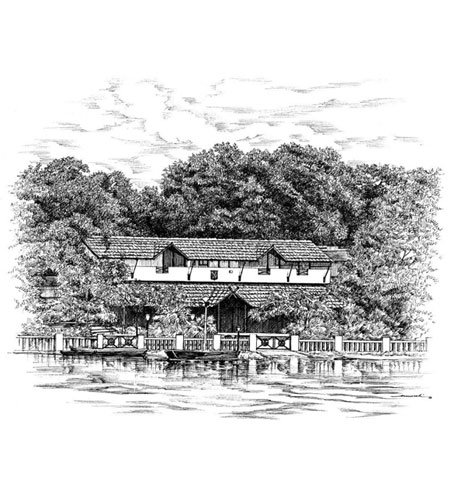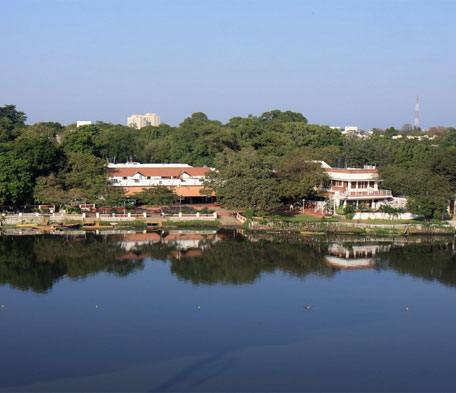-
 +91 44 2435 4751 / 2433
+91 44 2435 4751 / 2433 -
 info@madrasboatclub.com
info@madrasboatclub.com
 +91 44 2435 4751 / 2433
+91 44 2435 4751 / 2433  info@madrasboatclub.com
info@madrasboatclub.com 

The 19th Century saw the Britishers start boating activity in many cities in India. This should come as no surprise considering their maritime prowess. Madras, being home to three rivers, i.e., the Kosathalayar, Cooum, and Adyar, was home to one of the first rowing centres started by the British. In 1867, quite a few of the Britishers in Chennai took to the sport in full vigour and their congregation was christened the Madras Boat Club (MBC / Club).
The first formal boating (sailing and rowing) activities of MBC took place on Ennore Creek, which is fed by the Kosathalayar. In the last quarter of the century, rowing was active on the Cooum, which winds its way through the city. Towards the end of 19th century, rowing was active in the Long Lake of Nungambakkam (this lake has since disappeared). As the commerce of Chennai moved South, perhaps driven by Mount Road, from Fort St George to St Thomas Mount, rowing activity slowly shifted to the Adyar River flowing straight through South Chennai. In all these places, boat houses were constructed appropriately.
The first available record of MBC, the annual report for 1874 and the 8th since the Club's inception, speaks of 32 rowing and 24 non-rowing members. The Club, by then, had also the position of Captain of Boats, a tradition followed till date. This annual report speaks of sending a team to Poona (Pune) for a regatta. Annual Regattas soon followed which included events such as Coxed Ladies Pair.
Towards the end of the century, rowing had firmly moved to the present location. Rowing was active in all categories of boats including Eights. And in the year 1898, the club coat - dark blue with brass buttons - and the club monogram, which is in use even today without modification, were adopted by the then committee. That year also saw the first races between Madras and Colombo. This was the start of a rivalry that exists even today. 1900 saw the launch of the Merchants and Bankers Regatta with participation from British mercantile firms like Binnys, Parrys, Gordon Woodroffe etc.
By the early part of the 20th century, the Club was holding three regattas a year. These were the Cold Weather, Hot Weather, and Monsoon Regattas. MBC expanded its facility on the Adyar River to 5 boat bays during this time. By 1911, the sailing boats were handed over to the Yacht Club and MBC remained a Rowing Club. Over this period, Club steadily added more facilities like pontoon, landing stages, ladies room, bar and shower rooms. With gay bougainvillea and large tree cover, MBC was a pretty picture.
The First World War (1914-18) saw a dip in activity as many of the senior members were occupied on the war front. Post war, Rowing revived in 1920 and to the delight of the Club, younger members took to rowing with enthusiasm. By 1930, apart from rowing against Poona, Calcutta and Colombo, MBC took on Rangoon Boat Club.
In the year 1933, the Amateur Rowing Association of the East (ARAE) was formed. Madras Boat Club along with The Bombay Gymkhana Club, The Calcutta Rowing Club, The Karachi Boat Club, The Rangoon Boat Club and the Royal Connaught Boat Club became the founding members. In the first regatta held at Poona in 1933, the Fours was won by the Madras Boat Club and it is on record that a Pair Oared Race was held, which was also won by Madras Boat Club.

During this period, Club was steered by the Rt Rev E. H. M. Waller, Bishop of Chennai. Rowing benefitted from the Captainship of P.H.Wilson.
The Second World War (1939 - 1945) once again saw a major dip in rowing activities of the Club. With India attaining Independence in 1947, membership of the club was opened to Indians in 1949. The first Indian members were Dr. K.S. Sanjivi, K.S. Appa Rao, K. Gopalakrishnan, K.M. Nanjappa, K.S. Ranganathan, K.S. Anantharaman (ICS), V.S. Shankar, N.S. Arunachalam, M.V. Arunachalam, M. Hussain, and C.V. Narasimhan (ICS). However, till the 1950s, rowing continued to be dominated by Britishers.